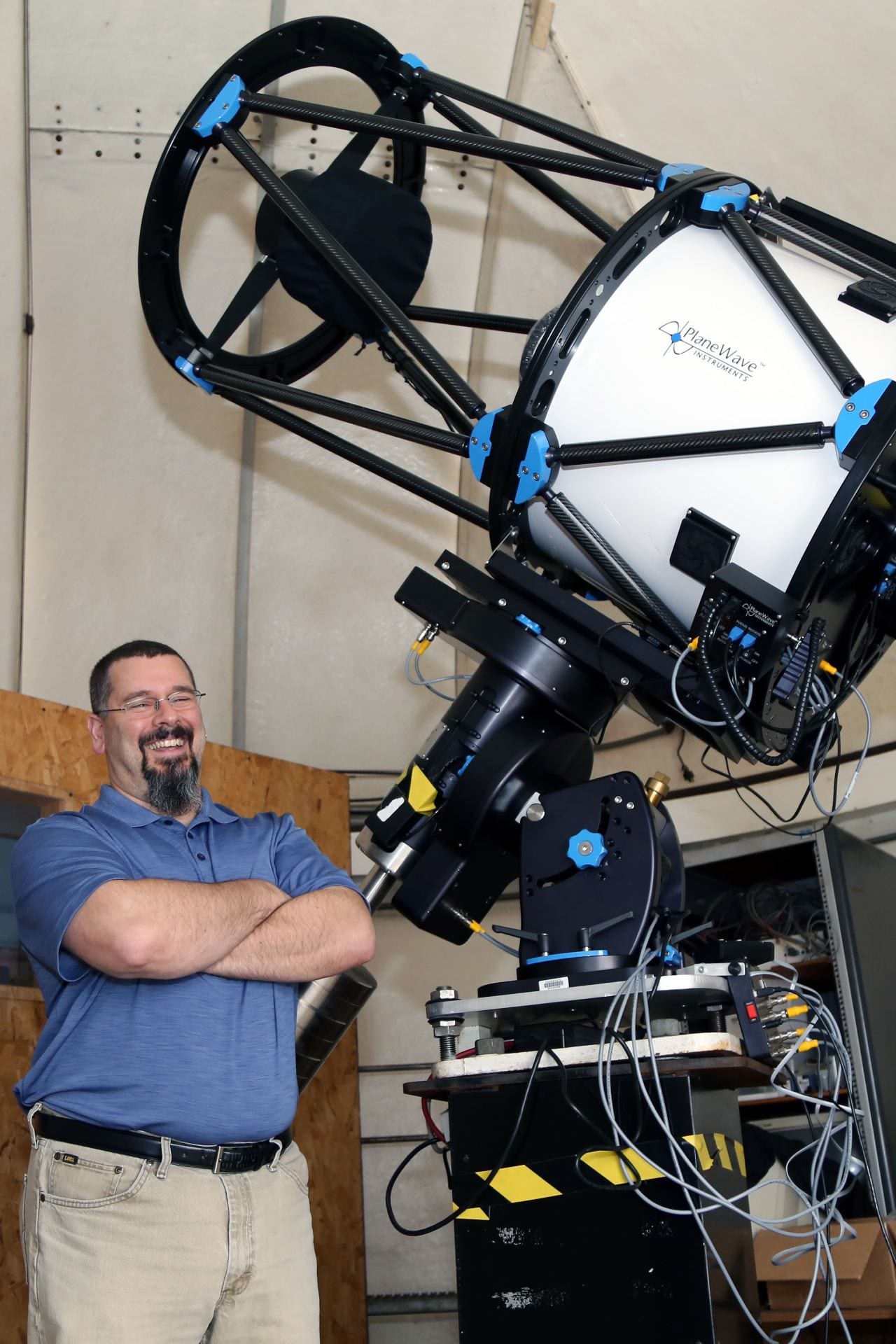
Christopher Palma
University Park
“I am a Teaching Professor and the Associate Department Head for the Undergraduate Program in the Department of Astronomy & Astrophysics at the Penn State University Park campus in State College, PA.
I have a wide variety of interests in teaching, research, and outreach, and have tried to capture many of them here.
Teaching:
- I teach face-to-face and on-line sections of Astronomy 1: Astronomical Universe for University Park and World Campus students. This is a one-semester survey of astronomy that covers all of astronomy in 15 weeks. I co-authored the “storyline” web version of Astro 1 with my colleagues Jane Charlton, Nahks Tr’Ehnl, Kim Herrmann,and Anand Narayan. I also teach Astro 5: The Sky & Planets for University Park students in face-to-face sections, which is our version of the first half of a two-semester survey of astronomy.
- I created and teach Astronomy 401: Fundamentals of Planetary Science and Astronomy, which is one of the required capstone courses in the Planetary Science and Astronomy major at Penn State, which began taking students in 2013.
- I co-created and co-teach, with Julia Plummer, the course Astronomy / Science Education 116: Introduction to Astronomy for Educators. This is an astronomy content course taught in a small group setting for pre-service teachers in the PreK – 4 and Middle Level (grades 4 – 8) CEAED major.
- I authored and teach the required course Astronomy 801: Planets, Stars, Galaxies, and the Universe for World Campus students enrolled in the on-line Masters of Education in Earth Science program.
- I co-teach Astronomy 602: Supervised Experience in College Teaching with my colleague Julia Kregenow. We both supervise and mentor all of the graduate teaching assistants in Astronomy & Astrophysics.
- I have previously taught and authored on-line versions of several other introductory astronomy courses and lab sections, including Astronomy 10: Elementary Astronomy and Astronomy 11: Elementary Astronomy Laboratory. Julia Kregenow and I are working with Stephanie and Tim Slater and the CAPER team on a new lab manual for Astronomy 11 that incorporates labs designed with a backwards faded scaffolding approach. We participate in professional development workshops for faculty interested in adopting these labs in their own astronomy courses.”
-From Christopher’s personal webpage
Project Details
Astronomy 116 & Science Education 116 Authoring Project
Course Goals
- Students will have a strong content background in modern Solar System astronomy in order to prepare them to teach this content at the PreK to grade 8 level
- Instructors will model teaching using the Claims-Evidence-Reasoning framework so students get experience as learners using this pedagogical method
- Students will become familiar with the unique practices of astronomy that scientists use in order to study Solar System objects
“Our goal is to not just create a textbook, but a full “Educative Curriculum”, which includes the student instructions for our investigations, a “gapless explanation” that is the storyline for the entire course that explains all of the content they will investigate and how an expert integrates those pieces into a coherent model for the formation and evolution of the Solar System, facilitation instructions for instructors, samples of student work that illustrate the types of quality explanations students provide as well as the misconceptions they often hold, videos of our instruction and student answers, and the assessments we have developed for the course. Since this course grew out of an NSF-funded project and has previously been offered four times, we have a significant start on the writing and organization of the material, however it is not in a format that can be easily shared with others, and there is still work to do to compile and clean up what we have completed so far. We did all of the work to allow us to do human subjects research on the teachers we worked with in the workshops and the students in our previous offerings of the class here at Penn State, so we have IRB documentation and student consent to share video and student work as part of this curriculum. This course is very unique in that it is an interdisciplinary course that pairs a scientist and a science educator to teach cutting edge astronomy content through evidence-based pedagogical techniques. We really wish to capture as much of this as we can so that others who may not be able to build a team like ours to co-teach the course with experts in both astronomy and K-12 pedagogy can still offer the course and have all the tools necessary to do it successfully. We put significant resources from the NSF into the workshop and subsequent course design, we have completed a great deal of published and in preparation research to document student learning when they are taught using the curriculum we developed, and we know that teachers from the workshops and students from the PSU course have included some of the the course investigations and learning into their classrooms. Unfortunately, the NSF award ended before we could complete the work to create the resources necessary to help grow the course within and outside of Penn State, and that’s what we hope to do through this program.”